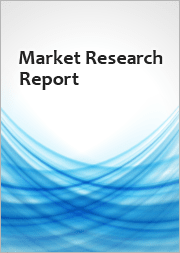
|
시장보고서
상품코드
1604557
이소부틸렌 폴리머 수지 시장 : 예측(2025-2030년)Isobutylene Polymer Resins Market - Forecasts from 2025 to 2030 |
||||||
이소부틸렌 폴리머 수지 시장은 6.62%의 CAGR로 성장할 것이며, 시장 규모는 2025년 90억 4,600만 달러에서 2030년 124억 6,200만 달러에 달할 것으로 예상됩니다.
이소부틸렌 폴리머 수지 시장은 여러 산업에서 활용되고 있기 때문에 증가가 예상됩니다. 자동차, 퍼스널케어, 화장품 산업과 같은 최종 사용 산업에서 제품 수요가 예측 기간 동안 산업을 견인할 것으로 예상됩니다. 예를 들어, 이소부틸렌의 응용 분야에는 표면 보호 필름, 창호용 실란트, 배터리 바인더 재료, 식품 포장 솔루션 등이 있습니다. 이 화학제품은 연료 첨가제로서 고무 타이어와 튜브에 널리 사용되고 있습니다. 폴리부틸렌은 상처 치료용 의료용 접착제, 의약품 코팅제, 의약품 포장재 제조에 사용됩니다. 이러한 분야의 전반적인 성장은 이소부틸렌 폴리머 수지 시장을 주도할 것입니다.
이소부틸렌 폴리머 수지 시장의 촉진요인
- 자동차 업계의 수요 증가
자동차 산업은 2023년에 큰 성장을 이루었습니다. 국제자동차산업협회(OICA)에 따르면 세계 자동차 생산량은 6,713만 3,570대, 상용차는 2,641만 3,029대로 2022년 대비 10% 성장했습니다. 자동차의 증가는 아시아태평양, 아프리카, 브라질 등 개발도상국의 수요가 증가하고 있기 때문입니다. 부틸 고무는 가황이 가능하며 최대 2000psi의 인장 강도를 가지고 있습니다. 부틸 고무의 특징은 공기 투과성이 낮고 화학제품과 산화에 대한 내성이 높다는 것입니다. 이 때문에 부틸 고무는 특히 내부 튜브에 사용하기에 적합합니다.
이러한 생산량 증가는 부틸 고무의 수요 확대로 이어질 것으로 보입니다. 또한, 기존 자동차의 증가는 엔진오일 첨가제용 폴리부틸렌옥신이미드의 성장에 영향을 미칠 것으로 보입니다. 예를 들어, Lubrizol의 폴리이소부틸렌옥신이미드는 운전 중 발생하는 유해한 쓰레기를 분산시켜 엔진을 깨끗하게 유지하기 위한 엔진오일 첨가제입니다.
이소부틸렌 폴리머 수지 시장의 지리적 전망
- 이소부틸렌 폴리머 수지 시장은 전 세계 5개 지역으로 나뉩니다.
지역별로 보면 이소부틸렌 폴리머 수지 시장은 북미, 남미, 유럽, 중동 및 아프리카, 아시아태평양으로 구분됩니다. 아시아태평양은 중국, 일본, 인도, 한국 등 주요 경제 국가가 지배적입니다. 급성장하는 신흥국 중 일부는 아세안 국가와 같은 이 지역의 일부 국가도 있습니다.
아시아태평양은 밀봉재, 자동차 부품, 연료 첨가제 등의 용도가 증가함에 따라 이소부틸렌 폴리머 수지 시장의 괄목할만한 성장이 예상됩니다. 국제자동차산업협회에 따르면 중국은 최대 자동차 생산국으로 2023년에는 12% 증가한 3,016만 966대를 생산했습니다.
북미는 자동차, 화장품, 연료 등의 분야에서 주로 사용되기 때문에 이소부틸렌 폴리머 수지 시장에서 큰 비중을 차지할 것으로 예상됩니다. 국제자동차산업협회에 따르면 2023년 미국은 전년 대비 6% 증가한 1,061만 1,555대를 생산했습니다. 또한 캐나다는 전년 대비 26% 증가한 155만 3,026대를 생산했습니다.
유럽에서는 화장품 산업에 큰 응용을 볼 수 있을 것으로 보이며, Cosmetics Europe에 따르면 유럽에서 가장 큰 국가별 화장품 및 퍼스널케어 제품 시장은 독일 159억 유로, 프랑스 137억 유로, 이탈리아 125억 유로로 나타났습니다.
이 보고서를 구매해야 하는 이유
- 통찰력 있는 분석 : 고객 부문, 정부 정책 및 사회경제적 요인, 소비자 선호도, 산업별, 기타 하위 부문에 중점을 두고 주요 지역뿐만 아니라 신흥 지역까지 포괄하는 상세한 시장 인사이트를 얻을 수 있습니다.
- 경쟁 환경 : 세계 주요 기업들이 채택하고 있는 전략적 전략을 이해하고, 적절한 전략을 통한 시장 침투 가능성을 파악할 수 있습니다.
- 시장 촉진요인과 미래 동향 : 역동적인 요인과 매우 중요한 시장 동향, 그리고 이들이 향후 시장 발전을 어떻게 형성할 것인지에 대해 알아봅니다.
- 행동 가능한 제안 : 역동적인 환경 속에서 새로운 비즈니스 스트림과 수익을 발굴하기 위한 전략적 의사결정에 인사이트를 활용합니다.
- 다양한 사용자에 대응 : 스타트업, 연구기관, 컨설턴트, 중소기업, 대기업에 유익하고 비용 효율적입니다.
어떤 용도로 사용되는가?
산업 및 시장 검토, 사업 기회 평가, 제품 수요 예측, 시장 진입 전략, 지리적 확장, 설비 투자 결정, 규제 프레임워크 및 영향, 신제품 개발, 경쟁의 영향
분석 범위
- 과거 데이터 및 예측(2022-2030년)
- 성장 기회, 과제, 공급망 전망, 규제 프레임워크, 고객 행동 및 트렌드 분석
- 경쟁사 포지셔닝, 전략 및 시장 점유율 분석
- 수익 성장률 및 예측 분석 : 부문별, 지역별(국가별)
- 기업 프로파일링(전략, 제품, 재무정보, 주요 동향 등)
목차
제1장 소개
- 시장 개요
- 시장 정의
- 분석 범위
- 시장 세분화
- 통화
- 가정
- 기준 연도와 예측 연도 타임라인
- 이해관계자에 대한 주요 이점
제2장 분석 방법
- 분석 디자인
- 분석 프로세스
제3장 주요 요약
- 주요 조사 결과
- 애널리스트의 견해
제4장 시장 역학
- 시장 성장 촉진요인
- 자동차 부문 수요 증가
- 윤활유 수요 증가
- 퍼스널케어·화장품의 폴리이소부틸렌 사용
- 시장 성장 억제요인
- 높은 제조 비용
- 규제상 과제
- Porter's Five Forces 분석
- 업계 밸류체인 분석
제5장 이소부틸렌 폴리머 수지 시장 : 종류별
- 소개
- 폴리이소부틸렌
- 부틸 고무
제6장 이소부틸렌 폴리머 수지 시장 : 용도별
- 소개
- 접착제
- 실란트
- 자동차 부품
- 연료 첨가제
- 윤활유 첨가제
- 기타
제7장 이소부틸렌 폴리머 수지 시장 : 최종 이용 업계별
- 소개
- 연료
- 고무
- 화장품
- 기타
제8장 이소부틸렌 폴리머 수지 시장 : 지역별
- 세계 개요
- 북미
- 미국
- 캐나다
- 멕시코
- 남미
- 브라질
- 아르헨티나
- 기타 남미
- 유럽
- 영국
- 독일
- 프랑스
- 이탈리아
- 스페인
- 기타 유럽
- 중동 및 아프리카
- 사우디아라비아
- 아랍에미리트
- 기타 중동 및 아프리카
- 아시아태평양
- 중국
- 인도
- 일본
- 한국
- 대만
- 태국
- 인도네시아
- 기타 아시아태평양
제9장 경쟁 환경과 분석
- 주요 기업과 전략 분석
- 시장 점유율 분석
- 기업 인수합병(M&A), 합의, 사업 협력
- 경쟁 대시보드
제10장 기업 개요
- ENEOS Corporation
- LABDHI CHEMICALS
- Janex S.A
- TER Chemicals
- SAFIC ALCAN
- TPC Group
- Exxon Mobil Corporation
- BRP Manufacturing
- DuPont
- Braskem
- Omega Rubber Industries
The isobutylene polymer resins market is expected to grow at a CAGR of 6.62%, reaching a market size of US$12.462 billion in 2030 from US$9.046 billion in 2025.
The isobutylene polymer resins market would witness an increase due to its utilization in multiple industries. The product demand from end-use industries such as automotive, personal care, and cosmetics industries is expected to drive the industry over the forecast period. Applications of isobutylene, for example, include surface protective films, window sealants, binder material for batteries, and food packaging solutions. These chemicals are widely used in rubber tires and tubes as fuel additives. Polyisobutylene is used to produce medical adhesives for the treatment of wounds, drug coatings, and pharmaceutical packaging materials. The overall growth in these sectors would lead the isobutylene polymer resins market.
Isobutylene polymer resin market drivers
- Rising demand in the automotive sector
The automotive sector is witnessing significant growth in 2023. According to the International Organization of Motor Vehicle Manufacturers (OICA), globally, the production for cars was 67,133,570, and for commercial vehicles, it was 26,413,029, which is a 10% growth from 2022. The increased growth in vehicles is due to the increasing demand from the developing parts of the world in Asia Pacific, Africa, and Brazil. Butyl rubber can be vulcanizate and have tensile strengths up to 2000 psi. These are characterized by low permeability to air and a high resistance to chemicals and oxidation. This makes it suitable for use in butyl rubber, especially in the inner tubes.
This increased manufacturing would lead to a positive growth demand for butyl rubber. Further, the existing number of automobiles would have a growth impact on polyisobutylene succinimides for the engine oil additives. For instance, Lubrizol polyisobutylene succinimides are engine oil additives for keeping engines clean by dispersing harmful debris generated during operation.
Isobutylene polymer resin market geographical outlook
- The isobutylene polymer resins market is segmented into five regions worldwide
By geography, the isobutylene polymer resins market is segmented into North America, South America, Europe, the Middle East and Africa, and Asia Pacific. The major economies like China, Japan, India, and South Korea dominate the Asia-Pacific region. Some of the fastest-growing emerging economies are from this region, such as ASEAN countries.
The Asia Pacific region is expected to see notable growth in the isobutylene polymer resins market due to increasing applications in sealants, automotive components, and fuel additives. According to the International Organization of Motor Vehicle Manufacturers, China is the largest producer of automobiles, with 30,160,966 vehicles manufactured in 2023, a 12% increase.
North America is expected to have a significant share in the isobutylene polymer resins market due to its major utilization in sectors such as automobile, cosmetics, and fuels. In 2023, the USA manufactured 10,611,555 vehicles, with a 6% increase from the previous year, according to the International Organization of Motor Vehicle Manufacturers. Further, Canada produced a total of 1,553,026, a 26% increase from the prior year.
Europe would witness a major application in the cosmetic industry. According to Cosmetics Europe, the largest national markets for cosmetics and personal care products in Europe are Germany with €15.9 billion, France with €13.7 billion, and Italy with €12.5 billion.
Reasons for buying this report:-
- Insightful Analysis: Gain detailed market insights covering major as well as emerging geographical regions, focusing on customer segments, government policies and socio-economic factors, consumer preferences, industry verticals, other sub- segments.
- Competitive Landscape: Understand the strategic maneuvers employed by key players globally to understand possible market penetration with the correct strategy.
- Market Drivers & Future Trends: Explore the dynamic factors and pivotal market trends and how they will shape up future market developments.
- Actionable Recommendations: Utilize the insights to exercise strategic decision to uncover new business streams and revenues in a dynamic environment.
- Caters to a Wide Audience: Beneficial and cost-effective for startups, research institutions, consultants, SMEs, and large enterprises.
What do businesses use our reports for?
Industry and Market Insights, Opportunity Assessment, Product Demand Forecasting, Market Entry Strategy, Geographical Expansion, Capital Investment Decisions, Regulatory Framework & Implications, New Product Development, Competitive Intelligence
Report Coverage:
- Historical data & forecasts from 2022 to 2030
- Growth Opportunities, Challenges, Supply Chain Outlook, Regulatory Framework, Customer Behaviour, and Trend Analysis
- Competitive Positioning, Strategies, and Market Share Analysis
- Revenue Growth and Forecast Assessment of segments and regions including countries
- Company Profiling (Strategies, Products, Financial Information, and Key Developments among others)
The Isobutylene polymer resins market is segmented and analyzed as follows:
By Type
- Polyisobutylene
- Butyl Rubber
By Application
- Adhesives
- Sealants
- Automotive Components
- Fuel Additives
- Lubricant Additives
- Others
By End-User Industry
- Fuel
- Rubber
- Cosmetics
- Other
By Geography
- North America
- USA
- Canada
- Mexico
- South America
- Brazil
- Argentina
- Rest of South America
- Europe
- United Kingdom
- Germany
- France
- Italy
- Spain
- Rest of Europe
- Middle East and Africa
- Saudi Arabia
- UAE
- Rest of the Middle East and Africa
- Asia Pacific
- China
- India
- Japan
- South Korea
- Taiwan
- Thailand
- Indonesia
- Rest of Asia-Pacific
TABLE OF CONTENTS
1. INTRODUCTION
- 1.1. Market Overview
- 1.2. Market Definition
- 1.3. Scope of the Study
- 1.4. Market Segmentation
- 1.5. Currency
- 1.6. Assumptions
- 1.7. Base and Forecast Years Timeline
- 1.8. Key benefits for the stakeholders
2. RESEARCH METHODOLOGY
- 2.1. Research Design
- 2.2. Research Process
3. EXECUTIVE SUMMARY
- 3.1. Key Findings
- 3.2. Analyst View
4. MARKET DYNAMICS
- 4.1. Market Drivers
- 4.1.1. Rising demand in the automotive sector
- 4.1.2. Increasing demand for lubricants
- 4.1.3. Use of polyisobutylene in personal care and cosmetics
- 4.2. Market Restraints
- 4.2.1. High costs of manufacturing
- 4.2.2. Regulatory challenges
- 4.3. Porter's Five Forces Analysis
- 4.3.1. Bargaining Power of Suppliers
- 4.3.2. Bargaining Power of Buyers
- 4.3.3. The Threat of New Entrants
- 4.3.4. Threat of Substitutes
- 4.3.5. Competitive Rivalry in the Industry
- 4.4. Industry Value Chain Analysis
5. ISOBUTYLENE POLYMER RESINS MARKET BY TYPE
- 5.1. Introduction
- 5.2. Polyisobutylene
- 5.3. Butyl Rubber
6. ISOBUTYLENE POLYMER RESINS MARKET BY APPLICATION
- 6.1. Introduction
- 6.2. Adhesives
- 6.3. Sealants
- 6.4. Automotive Components
- 6.5. Fuel Additives
- 6.6. Lubricant Additives
- 6.7. Others
7. ISOBUTYLENE POLYMER RESINS MARKET BY END-USER INDUSTRY
- 7.1. Introduction
- 7.2. Fuel
- 7.3. Rubber
- 7.4. Cosmetics
- 7.5. Others
8. ISOBUTYLENE POLYMER RESINS MARKET BY GEOGRAPHY
- 8.1. Global Overview
- 8.2. North America
- 8.2.1. United States
- 8.2.2. Canada
- 8.2.3. Mexico
- 8.3. South America
- 8.3.1. Brazil
- 8.3.2. Argentina
- 8.3.3. Rest of South America
- 8.4. Europe
- 8.4.1. United Kingdom
- 8.4.2. Germany
- 8.4.3. France
- 8.4.4. Italy
- 8.4.5. Spain
- 8.4.6. Rest of Europe
- 8.5. Middle East and Africa
- 8.5.1. Saudi Arabia
- 8.5.2. United Arab Emirates
- 8.5.3. Rest of the Middle East and Africa
- 8.6. Asia-Pacific
- 8.6.1. China
- 8.6.2. India
- 8.6.3. Japan
- 8.6.4. South Korea
- 8.6.5. Taiwan
- 8.6.6. Thailand
- 8.6.7. Indonesia
- 8.6.8. Rest of Asia-Pacific
9. COMPETITIVE ENVIRONMENT AND ANALYSIS
- 9.1. Major Players and Strategy Analysis
- 9.2. Market Share Analysis
- 9.3. Mergers, Acquisitions, Agreements, and Collaborations
- 9.4. Competitive Dashboard
10. COMPANY PROFILES
- 10.1. ENEOS Corporation
- 10.2. LABDHI CHEMICALS
- 10.3. Janex S.A
- 10.4. TER Chemicals
- 10.5. SAFIC ALCAN
- 10.6. TPC Group
- 10.7. Exxon Mobil Corporation
- 10.8. BRP Manufacturing
- 10.9. DuPont
- 10.10. Braskem
- 10.11. Omega Rubber Industries



















